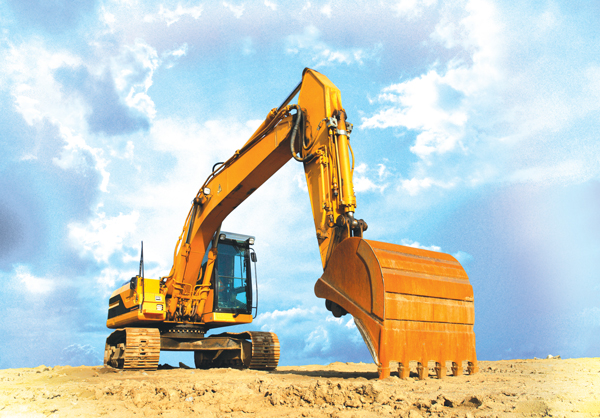
After enduring a painful contraction during the financial crisis and its aftermath, the construction industry finally found a bottom in 2013. Now, for the first time in several years, many companies have the opportunity to win new contracts and grow their businesses as the U.S. economy shakes off its long-term malaise.
In fact, according to a recent GE Capital survey of leaders of U.S. middle-market firms, leaders in the construction industry are among the most optimistic about the economy. Some 57 percent said they increased employment during the past year, in anticipation of a strong 2014. This was the highest increase in employment of all industries surveyed.
After years of holding the purse strings tight and delaying the inevitable, construction executives with $10 million to $1 billion in revenue are finally willing to consider investing in capital expenditures again, such as replacing equipment that is well past its prime. Other data supports this trend. According to the Manufacturer’s Alliance for Productivity and Innovation and the Material Handling Industry, construction machinery production is expected to grow by 3.3 percent in 2014, while new orders for material handling equipment is predicted to jump 10 percent in 2014.

CFOs and business owners considering equipment financing for the first time should note that the construction industry has a long history of financing equipment—and for good reason. Unlike equipment in some other industries, there is an active market for used construction equipment that makes valuing assets easy and transparent. When a lessor or lender can easily value an asset and is confident that the asset can be sold quickly to unlock that value, the lessor or lender can offer better financial terms to the construction company looking to finance new or existing equipment.
But, even those executives who understand the active market for used assets and are committed to upgrading equipment face another challenging question: How should they finance these expenditures? Should they pay cash, tap a revolving credit line or finance them with a loan or lease?
Improve Financial Flexibility
Of these options, financing with a loan or lease often provides the most financial and operational flexibility. While a loan requires taking on debt, which some CFOs and business owners still try to avoid, financing equipment in this way allows the company to maintain valuable cash reserves. A CFO could also preserve cash by tapping an existing revolving line of credit, but this approach lowers overall borrowing capacity and reduces financial maneuverability should some unforeseen need arise. By comparison, an equipment loan or lease preserves cash on hand and keeps other credit facilities untouched.
This makes equipment financing a powerful working capital solution for construction companies, particularly for construction service companies that don’t have inventory against which to borrow. These companies’ most tangible asset is their equipment, and, with an equipment-secured term loan or a sale-leaseback, a lender can help a company restructure its balance sheet to unlock equity for working capital.
In a sale-leaseback of equipment, for example, a company that owns equipment sells that asset to a financial institution, and then leases it back from the financial institution for a specified period of time, locking in today’s competitive interest rates. Equipment leases for new equipment—in which the company has no built-up equity—are also valuable for their cash-flow benefits. For instance, a construction company can choose to finance 20 new cement trucks with a 60-month lease that includes a residual value and an option to purchase the trucks at the end of the lease. The financial institution is then the owner of the vehicles for federal income tax purposes during the lease term, and the residual value lowers the lease payments for the company, thereby increasing its free cash flow.
Improve Operational Flexibility
Equipment financing can also provide greater operational flexibility than outright ownership of an asset. In five years, much can change in an industry, at an individual company, in the financial markets and in the overall economy. Leasing gives a company more flexibility by allowing managers to make decisions in the future, when circumstances may have changed. At the end of the lease, the company might choose to purchase the equipment, renew the lease or return the asset to the lessor. Leases may also offer an operational benefit specific to the construction industry: obtaining surety bonds. If the contractor defaults, the surety company is obligated to find another contractor to complete the contract or compensate the project owner for the financial loss incurred. For that reason, most surety companies want to see as little debt on a construction company’s balance sheet as possible.
The Fortitude to Invest
Even with the turn in the economy, it’s still uncertain if construction companies will choose to upgrade their fleets this year. Consider this: Although construction executives are upbeat about the national economy, the GE Capital survey found that they have relatively low revenue expectations for themselves in 2014 compared to other industries. Only 51 percent of construction executives expect their gross revenue to grow in 2014. This is about eight percentage points below the average sentiment for all industries surveyed. Given the experience of the past few years, these tempered expectations are understandable. The danger, however, may be that executives underinvest at this critical moment and miss out on the economic rebound.
Another possible risk is that construction firms do invest in new equipment but do so in ways that unnecessarily reduce financial and operational flexibility. Using cash and paying down debt when cash flows are improving can be tempting, but the better strategy might be to take on debt when you can get it, not when you need it. Equipment financing with a specialty lender is a valuable tool to keep cash on hand, unlock equity and increase cash flow for working capital today in order to promote long-term business growth.
